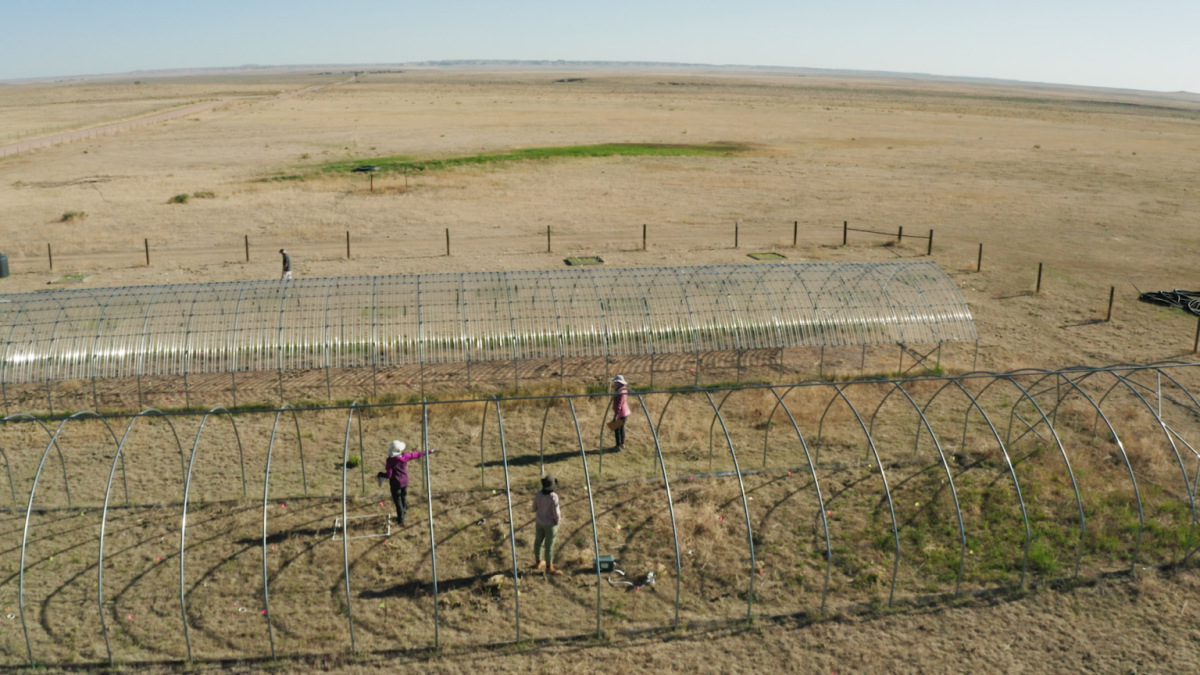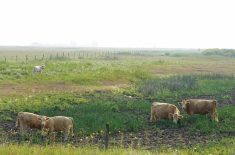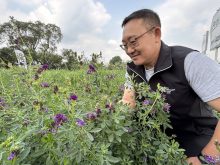Updated — As the federal government looks to manage impacts of ongoing drought conditions in Canada’s West, producers in parts of five provinces can already expect to be eligible for the livestock tax deferral program.
Agriculture Minister Marie-Claude Bibeau announced Thursday in Winnipeg that producers in drought-designated areas of southern Alberta, southeastern British Columbia, northwestern Ontario, parts of Saskatchewan and all of agricultural Manitoba (see map below) will be the initial regions eligible for the deferral.
“At times like this we need to reach out to each other, we need to find a helping hand and a sympathetic ear. We all need to pull together, neighbours helping neighbours, showing the true strength and solidarity of our communities,” she said at a Winnipeg press conference after a tour of drought damage north of the city.
Read Also

Prolonged drought causes unprecedented productivity loss: Study
Colorado State University — Extreme, prolonged drought conditions in grasslands and shrublands would greatly limit the long-term health of crucial…
The livestock tax deferral is being set up for the 2021 tax year with earlier-than-usual designations, so as to allow affected beef producers forced to sell a significant amount of their breeding herd to defer income tax from those sales. Other regions are expected to be added later.
The Canadian Cattlemen’s Association and other groups had previously called for the “immediate” implementation of the tax deferral program — as well as an expansion of the program to include other classes of livestock, among other requests.
Asked Thursday about the possibility of expanding the deferral provision beyond just breeding stock for the 2021 tax year, Bibeau said the government has received that request and will evaluate it, but “the first thing is to trigger the program that already exists… Making modifications takes longer.”
Manitoba Beef Producers president Tyler Fulton, who attended the Winnipeg event, added “we know it’s going to take multiple years to recover the breeding herd — and so considerations for different classes of animals, and adding multiple years (of deferral), we think makes a lot of sense.”
Crops for feed
Bibeau also pledged Ottawa’s support for “immediate” bilateral adjustments to affected provinces’ crop insurance programs, so drought-damaged crops can be made available for feed.
Saskatchewan had already announced such an adjustment last week, to give crop producers incentives to make drought-hit crops available for greenfeed, grazing or silage for livestock.
Manitoba on Thursday announced a similar adjustment — as did Alberta, which said Thursday its crop insurance adjustment would help encourage drought-hit crop producers “to act swiftly to salvage crops for livestock feed rather than watch their fields deteriorate further, and risk harvesting nothing.”
In talks with Manitoba and Alberta following Saskatchewan’s adjustment, Bibeau said Thursday, “we thought it was a really good idea and that the (AgriInsurance) program was able to take (the adjustments) and to remain sustainable.”
“What’s critical right now,” MBP’s Fulton added, “is that the message gets out that there is a really good incentive (to salvage crops for feed), so that crop guys can decide — right now — because time is ticking.”
Cattle producers, he said, “have likely less than a week left to make these decisions, and so the quicker that we can make those decisions and start salvaging some of the value of these crops — it’s just a critical time right now.”
‘Verbal commitment’
The four western provinces and Ontario have also requested AgriRecovery programs be put in place to further alleviate drought damage, Bibeau added.
AgriRecovery is designed to offer disaster-specific relief “in situations where producers do not have the capacity to cover the extraordinary costs, even with the assistance available from other programs.”
Supports under the program could include direct assistance to producers for added livestock feed costs, transportation and water infrastructure.
“We are working around the clock to turn those around as quickly as possible to help farmers with the extraordinary cost,” Bibeau said.
Alberta Agriculture Minister Devin Dreeshen, in Thursday’s release on adjustments to crop insurance, reiterated he and his Saskatchewan, Manitoba and Ontario counterparts had received “verbal commitment from the federal government that a joint AgriRecovery program will be initiated to support producers affected by drought conditions prior to a federal election.”
Assessments for AgriRecovery are “currently underway” in those provinces, he said.
Thursday’s trip to Manitoba is arguably the most significant travel Bibeau has undertaken since the pandemic began — outside of a few announcements around her home province of Quebec.
After receiving an invitation from an area farmer, however, she decided to witness the devastation herself.
“I speak for Prime Minister Justin Trudeau and myself when I say to all producers affected by the disaster, we have your back to get through the challenges of today and to position you for a sustainable future in agriculture,” she said. “We will do all we can to help you get back on your feet, and once again producing the best food in the world.”
“Canadian farmers and ranchers are facing one of the most severe, widespread droughts and one of the largest feed supply shortages that they have experienced in decades,” CCA vice-president Reg Schellenberg said in a separate release Thursday after Bibeau’s announcement.
“We appreciate Minister Bibeau and the federal government taking the time to visit one of the hardest-hit areas of the drought and subsequently taking swift action to support farm families.”
Bibeau also continues to hope the climate disaster will prompt provinces to accept her long-standing offer to make changes to AgriStability.
Ottawa has offered to increase the compensation rate offered to producers to 80 per cent, up from the current 70, which would add “$75 million nationally into the pockets of farmers who need it the most every year” according to Bibeau.
During Thursday’s press conference, she once again urged Prairie provinces to accept that offer.
As for the damages she saw on her trip, Bibeau told her audience, including several ranchers, that “I can’t begin to imagine the stress that producers are going through, watching your pastures and crops dry up, wondering how you’re going to get your animals through the winter, and facing the prospect of sending breeding cattle off to auction — animals that are the result of generations of careful genetic selection, hard work and sacrifice.”
Fulton also described the reaction from one ranch family MBP had heard from after having to disperse its entire herd: “They said ‘Can you imagine how it feels to see your years of hard work and love for farming go onto a truck? This is our livelihood, it’s heartbreaking.'”
Manitoba’s Interlake region, he said, is particularly hard hit, noting a livestock auction sale Wednesday at Ashern, Man. involving “more than 1,500” animals whereas typically most Manitoba auction marts are on reduced schedules or summer breaks at this time of year.
— D.C. Fraser reports for Glacier FarmMedia from Ottawa. Includes files from Glacier FarmMedia Network staff in Winnipeg.
Livestock tax deferral: How it works
In regions officially designated for drought (see initial 2021 map below), flood or excess moisture, the federal livestock tax deferral provision allows eligible producers who reduced breeding herds by at least 15 per cent to defer part of their income from sales until their next non-designated tax year.
To defer income, a producer’s breeding herd must have been reduced by at least 15 per cent in the tax year in question. If the herd was cut by at least 15 per cent, but less than 30 per cent, then 30 per cent of income from net sales can be deferred.
Where a producer reduced a breeding herd by 30 per cent or more, 90 per cent of income from net sales can be deferred.
Thus, in the 2022 tax year — or the next tax year in which the designation is lifted for a specific region — the income from those sales can be at least partially offset by the cost of reacquiring breeding animals, the government says.
In the 2020 tax year, designated drought zones for tax deferrals had included New Brunswick, Prince Edward Island and parts of southeastern Quebec and northwestern Nova Scotia.
Unlike Thursday’s relatively early designation announcement, however, the 2020 designation list wasn’t finalized until May 2021 — by which time many producers had already filed their 2020 tax returns and would have needed to seek adjustments. — GFM












